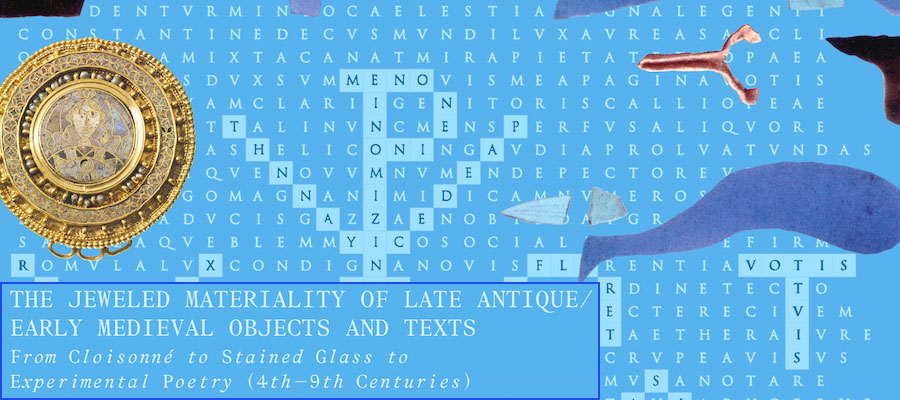The Jeweled Materiality of Late Antique/Early Medieval Objects and Texts. From Cloisonné to Stained Glass to Experimental Poetry (4th–9th Centuries), Masaryk University, November 11–14, 2024
The interface among the material, visual, and literary cultures of the long late antiquity and beyond has become a topic of scholarly interest ever since the publication of the seminal 1989 book The Jeweled Style by Michael Roberts. The visual–verbal dialectics of this period of geopolitical and cultural transformation, as manifested in various instances of spoliation, patterns of fragmentation, and a preoccupation with (exquisite) detail in different cultural media, were subsequently studied especially by Jaś Elsner and Jesús Hernández Lobato. The topical relevance of Roberts’ original concept more than 30 years after its invention is clear from, among other scholarly endeavors, the recent edited volume A Late Antique Poetics? The Jeweled Style Revisited (2023), which offers numerous insightful contributions on the topic across different genres, regions, and temporal contexts.
Following this fruitful line of scholarly discourse, we wish to expand and collectively rethink the “cumulative aesthetics” of the long late antiquity ranging from the 4th to the 9th century by examining material artefacts and literary texts which are, in one way or another, rooted in what came to be called the “jeweled style”. The aim of the conference is to offer a shared interdisciplinary platform to study late antique aesthetic developments across different media and territories (esp. late Roman and Merovingian Gaul, the British Isles, the Italian peninsula, Hispania, West Asia, and Northern Africa). By bringing together specialists from different disciplines, including, but not limited to, art history, aesthetics, classical philology, and archaeology, we would like to consider complementary methodological perspectives on the phenomenon of jeweled aesthetics in late antique art and beyond with a particular focus on the following topics:
- the birth of so-called mosaic windows composed of fragmented quarries of colored glass, a direct ancestor of medieval stained-glass windows;
- the image-fragmentation processes at work in parietal mosaics and opus sectile;
- the development and diffusion of objects made in the cloisonné style featuring precious gems, glass, and enamels;
- the tradition of illuminated manuscripts featuring letters formed from animal figures, human forms, or “aniconic” motifs, typical of Merovingian and Insular book painting but also existing in other contexts;
- the “material” work with language (incl. stylistic features, genre mixing, etc.) in late antique authors such as Optatian, Ausonius, Sidonius Apollinaris, Venantius Fortunatus, Aldhelm of Malmesbury, Hrabanus Maurus, and Sedulius Scotus;
- the phenomena of (not only) so-called Hisperic aesthetics, such as multi-mediality, conceptual ambiguity, and meta-textual/meta-visual self-referentiality, across different spheres of late antique/early medieval cultural production;
- the applicability of the concept of the “jeweled style” and fragmented aesthetics to the artistic cultures of West Asia (from late Sasanian to early Islamic) and the respective material production (e.g. silverware, mosaics, textiles, architectural decoration).
The conference will be held under the auspices of the project “Fragmented Images. Exploring the Origins of Stained-Glass Art” (GA23-05243S) funded by the Czech Science Foundation.
Organizers: Alberto Virdis, Marie Okáčová
